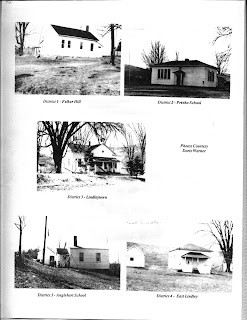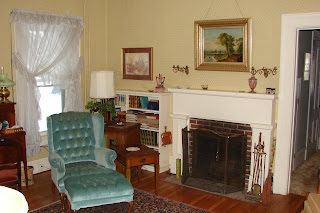Learn something new -Every Day
Eastman's Online Genealogy Newsletter
The Daily Online Genealogy Newsletter
Article copied from Dick Eastman's daily on line publication
Photos from Lindley's 200 Year History 1990
(Kitty)
(+) Consider the Source: Original, Derivative, or Copy
The following is a Plus Edition article written by and copyright by Dick Eastman.
Experienced genealogists are always aware that they must verify information by looking at original documents or a microfilm or digital image of an original document. We should know better than to believe a statement on a web site, in a genealogy book, or a verbal statement from Aunt Tilley about the “facts” of our family trees. However, what is the definition of an “original document?”Let’s take one well-known claim of an original document that isn’t really accurate: the U.S. Declaration of Independence. Almost all American schoolchildren are familiar with this document; and, if we paid attention in class, we know that the document is on display at the U.S. National Archives building in Washington, D.C. In fact, millions of us, myself included, have visited that building to view the document on display. However, how many of us were ever told that the document displayed in Washington is not the original, hand-written document? Instead, it is one of many copies that were produced on a printing press.
No, this isn’t a story plot from a Nicholas Cage movie. In fact, the document displayed at the National Archives building in Washington, D.C. is a copy made by Philadelphia printer John Dunlap, official printer to the Congress, during the evening of July 4, 1776, after the original, hand-written document was given to him. Admittedly, the original and the copies made by John Dunlap had no signatures. The “copy” now on display at the National Archives is the only copy that was actually signed by each delegate and therefore is the one that we can now refer to as the real Declaration of Independence. However, it was produced on a printing press and is not the original, hand-written piece of paper.
The original Declaration of Independence was written by hand by Thomas Jefferson. After making alterations to his draft as suggested by Ben Franklin and John Adams, Jefferson later recalled that, “I then wrote a fair copy, reported it to the Committee, and from them, unaltered, to Congress.”
The committee sent the hand-written manuscript document, probably Thomas Jefferson’s “fair copy” of his rough draft, to John Dunlap, official printer to the Congress. Dunlap printed the copies on the night of July 4, 1776. It is unknown exactly how many copies were printed, but the number is estimated at about 200. On the morning of July 5, copies were dispatched by members of Congress to various assemblies, conventions, and Committees of Safety as well as to the commanders of Continental troops. Also on July 5, a copy of the printed version of the approved Declaration was inserted into the “rough journal” of the Continental Congress for July 4. The text was followed by the words, “Signed by Order and in Behalf of the Congress, John Hancock, President. Attest. Charles Thomson, Secretary.”
Twenty-six copies are known to exist today of what is commonly referred to as “the Dunlap broadside,” 22 owned by American institutions, 3 by British institutions, and 1 by an unknown private owner. A list of their present locations may be found on Wikipedia at http://goo.gl/0ZyOP.
All of these copies were unsigned as they were printed before approval had been granted by the 13 colonies. Each delegate had to await approval from his home colony before being allowed to sign.
Contrary to popular belief, the U.S. Declaration of Independence was not signed on July 4, 1776. While the document was APPROVED by the delegates on July 4, several weeks were required for the document to be printed and distributed to all 13 colonies for approval, and then some more time to re-assemble all the delegates again in Philadelphia. Delegates were not authorized to sign until after their home colony had approved the document and that required some time back in the days before instant communications.
One of the “Dunlap broadside” copies was signed by all the delegates in attendance on August 2, 1776, and that copy now is on display at the National Archives in Washington, D.C. Therefore, the document that most people think of as the U.S. Declaration of Independence is not the original, hand-written document. It is a copy, although it is the only SIGNED copy. The copy on display in Washington was printed on a printing press, but each delegate signed this one copy by hand.
If Thomas Jefferson’s memories were correct, and he indeed wrote out a fair copy which was shown to the drafting committee and then submitted to Congress on June 28, the original document has not been found. “If this manuscript still exists,” wrote historian Ted Widmer, “it is the holy grail of American freedom.” (Source citation for this statement: dozens of web sites. Start at http://goo.gl/HNsLq.)




Comments
Post a Comment